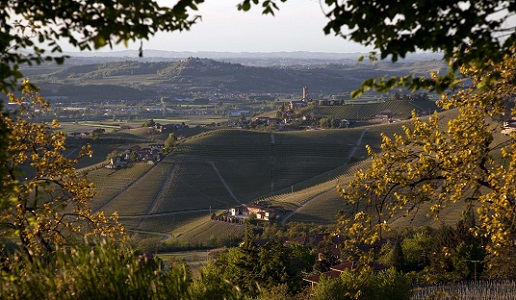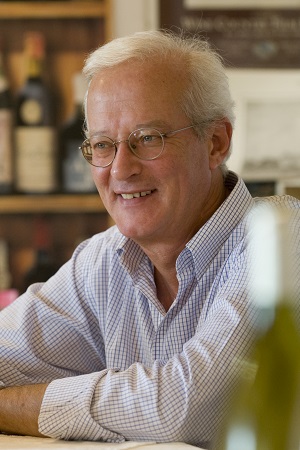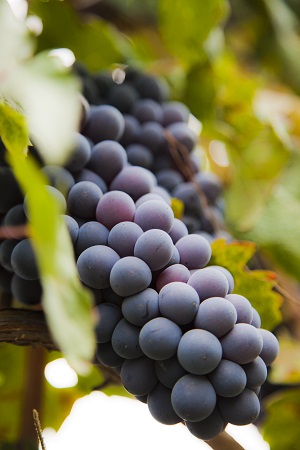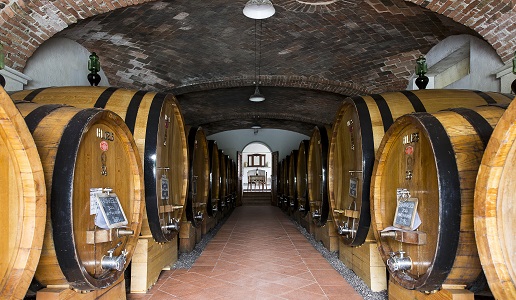Camp Gros Martinenga, the elegance of Barbaresco (1)

A chat with Alberto di Gresy, the deus ex machina of Tenuta Cisa Asinari dei Marchesi di Gresy in Barbaresco.
If may be due to their aristocratic origin, it may be because their best vineyard, Martinenga, is exclusively theirs (the French would call it a monopole), but Tenuta Cisa Asinari dei Marchesi di Gresy is not the first name that comes to the mind of wine lovers. And yet the estate is a member of a restricted elite, right at the top, the non plus ultra of Barbaresco.
There is a key example why: the reputation of Martinenga vineyard is such that up until ten years ago or so it was the benchmark for Nebbiolo Barbaresco grapes on the Alba market. Then there is the estate itself: magnificent and worth a visit on its own.

Tenuta Cisa Asinari dei Marchesi di Gresy dates back to the end of the 17th century. They began making their own wine in 1973 thanks to Alberto di Gresy who, together with his children Alessandro and Ludovica, still runs the estate today.
Martinenga is a 25-hectare vineyard of which 12 are situated in a splendid amphitheater with a southern exposure. The complexity of the microclimate and the particular composition of the soil, rich in tuff stone and blue Langhe marl, give the wines unmatched harmony and elegance, even in difficult years.
Thanks to an extraordinarily multiform terroir and the traits of the Nebbiolo grape, the estate has been able to bring out the natural diversities within the vineyard, pinpointing two particular subzones: Gaiun and Camp Gros, which are situated at opposite ends of the amphitheater and produce the highest expressions of the Martinenga vineyard. Camp Gross has been produced since 1978 and Gaiun since 1982.
Martinenga is one of the most famous and suggestive vineyards in the whole Barbaresco appellation and, as we said, it is the only one to be entirely owned by a single producer. Camp Gros is a single, around 2.5-hectare plot within the Martinenga Added Geographic Mention (MGA) vineyard. It is located in the extreme eastern side of the vineyard on a hillside at an altitude of around 250m above sea level and a southwest exposure.
DoctorWine: What are Martinenga’s main characteristics?
Alberto di Gresy: The soil is calcareous, characterized almost entirely by marl layers with little sand while the earth has a significant percentage of fine sediments, lime and clay. The vines are contour planted and counter-espalier-trained with simple Guyot pruning. The vines are around 50 years old and grafted onto Kober 5 BB rootstocks. Camp Gros is different from the rest of the Martinenga vineyard due to its particular, existing microclimate which gives the Nebbiolo a different reading, or expression.
DW: What basic methods are used in the winery?
AdG: The grapes, already selected in the vineyard, are subject to further selection by hand using a conveyor belt and then destemmed and pressed with the juice pumped into stainless steel vats for fermentation. Fermentation takes place with submerged cap maceration under controlled temperatures round the 26th day, with periodic stirring and delestage (racking). Submerged cap maceration continues after fermentation for a period that varies between 25 and 45 days depending on the harvest. Malolactic fermentation is spontaneous and occurs in cement vats at a temperature of 20°C. Barbaresco Camp Gros Martinenga Riserva matures for around a year in French-oak barriques (new and used) and then for around another year and a half in Slavonian-oak barrels. The wine is then bottled and ages for two years in the cellar.
DW: Some observers believe that with climate change it would make more sense to move Langhe vineyards to a higher altitude. What do you think?
AdG: I don’t know if it makes more sense, but it could be a correct approach if they are not moved too high, especially for a varietal that has a long phenological cycle. The highest altitude in the municipality of Barbaresco is around 300m (if I’m not mistaken) and we are very satisfied with the results of the latest vintages.
DW: Di Gresy Barbaresco are among the most somber and elegant in the appellation, without ever being too relaxed. They are classically timeless, ignoring fads, and tasting them it is practically impossible to define them as modern or traditional.

AdG: We have a certain style that derives from having this vineyard. And we are lucking that it is Martinenga, one of the most elegant and recognizable geographic mention areas in the whole appellation, which thanks to its multiform terroir gives us different interpretations of the land. I would not say that our style has changed over the years. We still have a great passion for what we do and respect for tradition, nature and the varietal. Our winemaking goal remains the same: we want to put the great class of our vineyard into a bottle, producing wine of the highest quality.
DW: In the leading winemaking areas of the world, the role of noble families would appear to be that of imposing a classic wine style. Is this also the future goal of the Marchesi di Gresy family?
AdG: I don’t know if the aristocratic factor translates into a classic style. For sure, these families have the great fortune to be able to hand down generation to generation lands that are historically suited for winegrowing. A vineyard has its own identity, and a producer knows that they cannot help but listen, understand and respect its particularity.
DW: The fog, truffles, Veronelli and the greatness of Nebbiolo. Do you think this extremely important, collective patrimony so evident in the Langhe could be a double-edged sword for the future and, more in general, for simple wine lovers?
AdG: Absolutely not! I believe all this can only be an excellent motive to encourage simple wine lovers to come and see with their own eyes the splendor of our land and discover all its nuances and expressions. And these are also the same reasons that draw people back. The Langhe is magnificent and we are truly blessed.
DW: What does quality farming mean for the Langhe in 2020?
AdG: Farming in the Langhe today means always respecting nature, in particular the ecosystem of the vineyard, and seeking to interprete the climate in order to, in the end, maintain the characteristics of the individual varietal.
Related Products
| Product | Producer | Date of publication | Author | Read | |
|---|---|---|---|---|---|

|
Tenute Cisa Asinari dei Marchesi di Gresy
|
06/20/11 | Redazione |
Alberto di Gresy is one of those rare Piedmont aristocrats who has continued his family’s winemaking tradition. His family has owned Tenuta Cisa Asinari since 1797 and he has been running it... Leggi tutto |

 Italiano
Italiano






